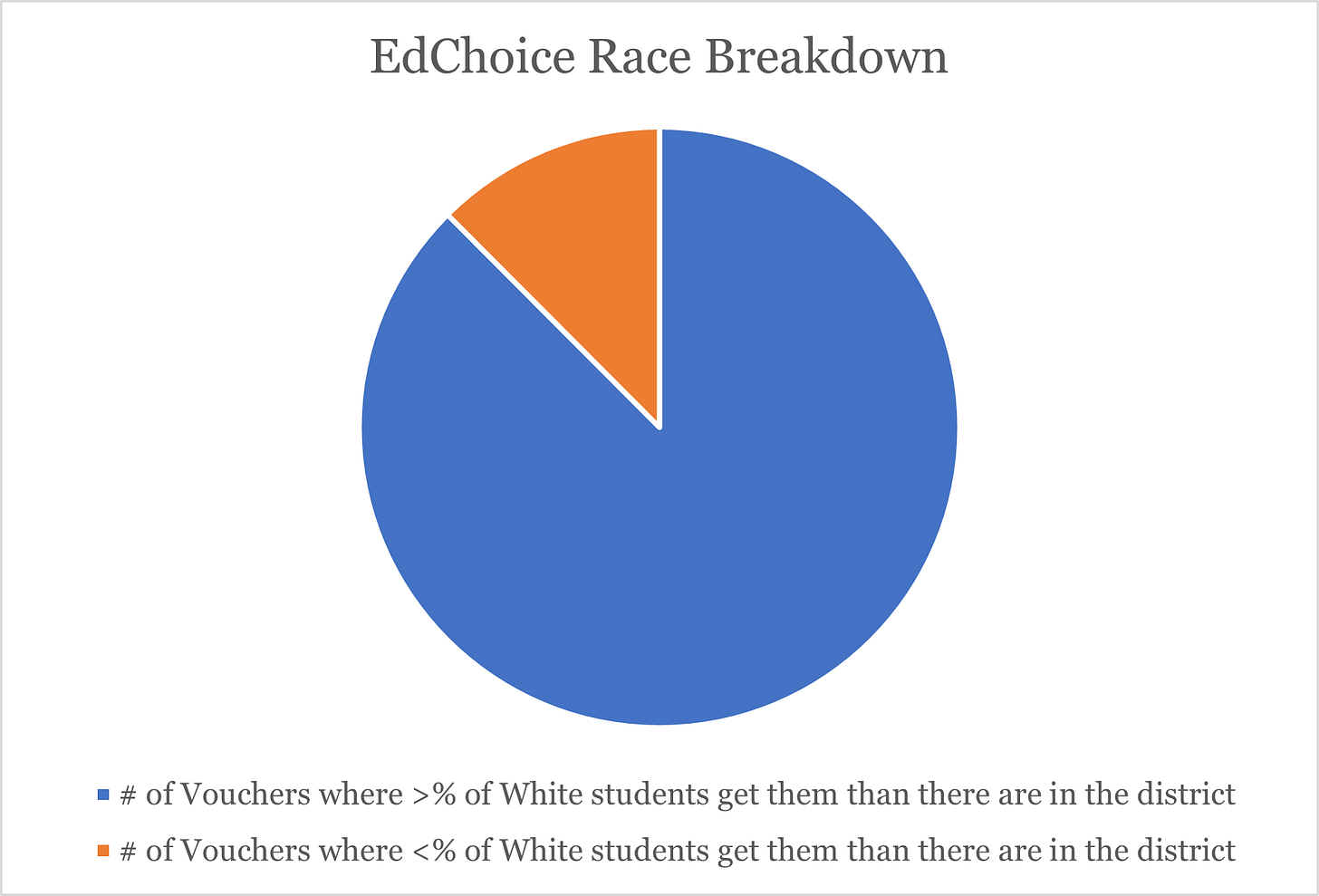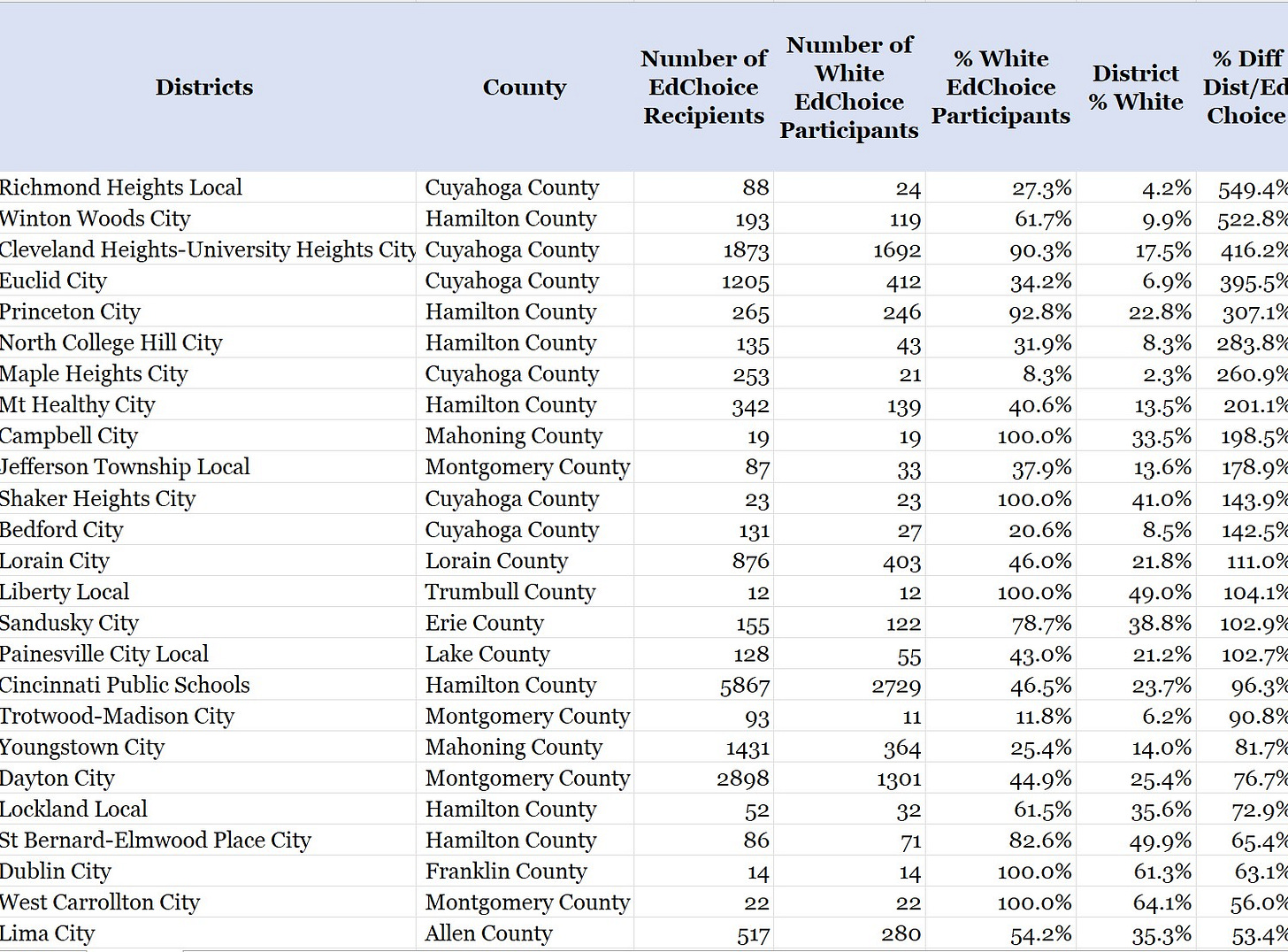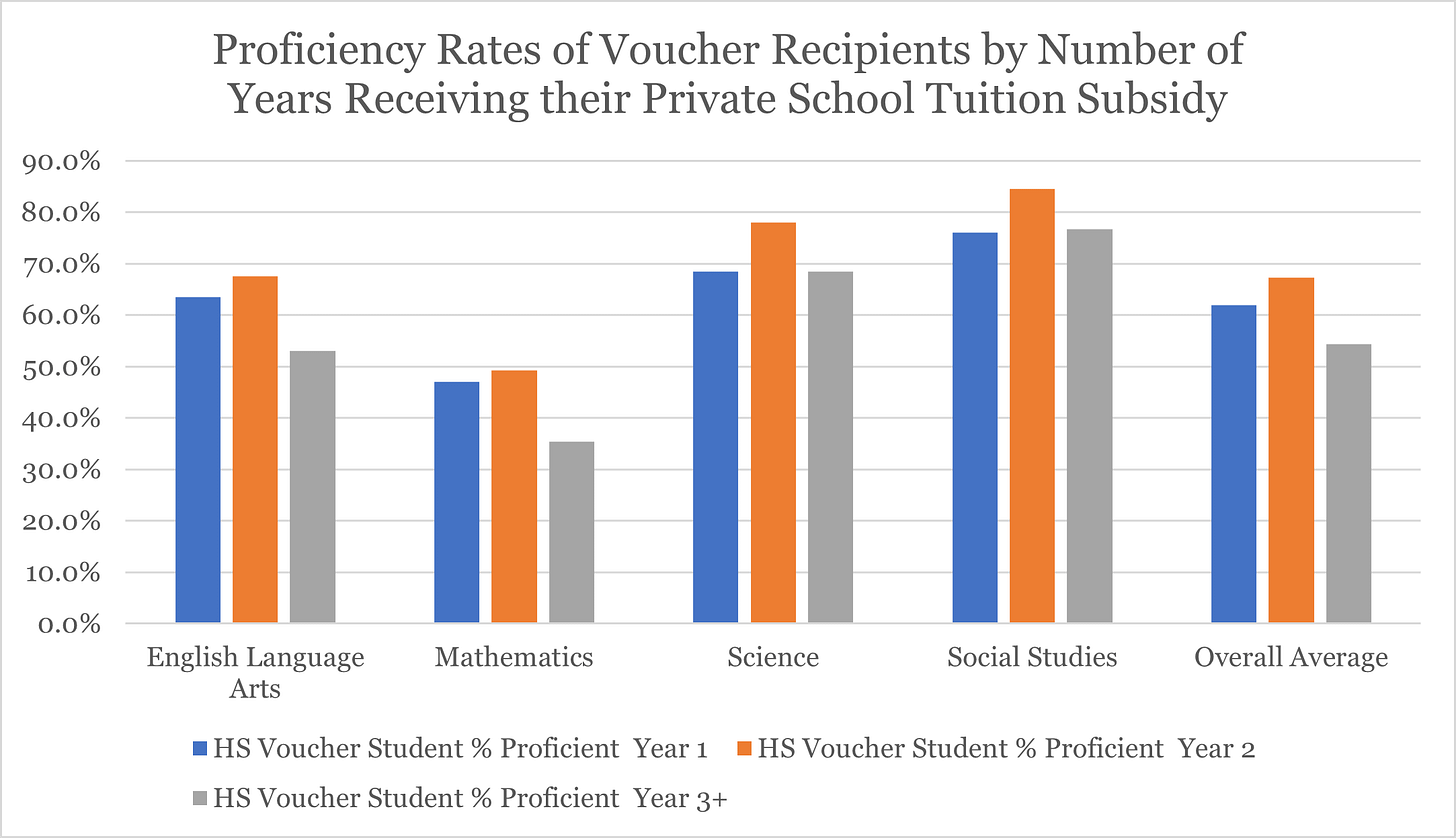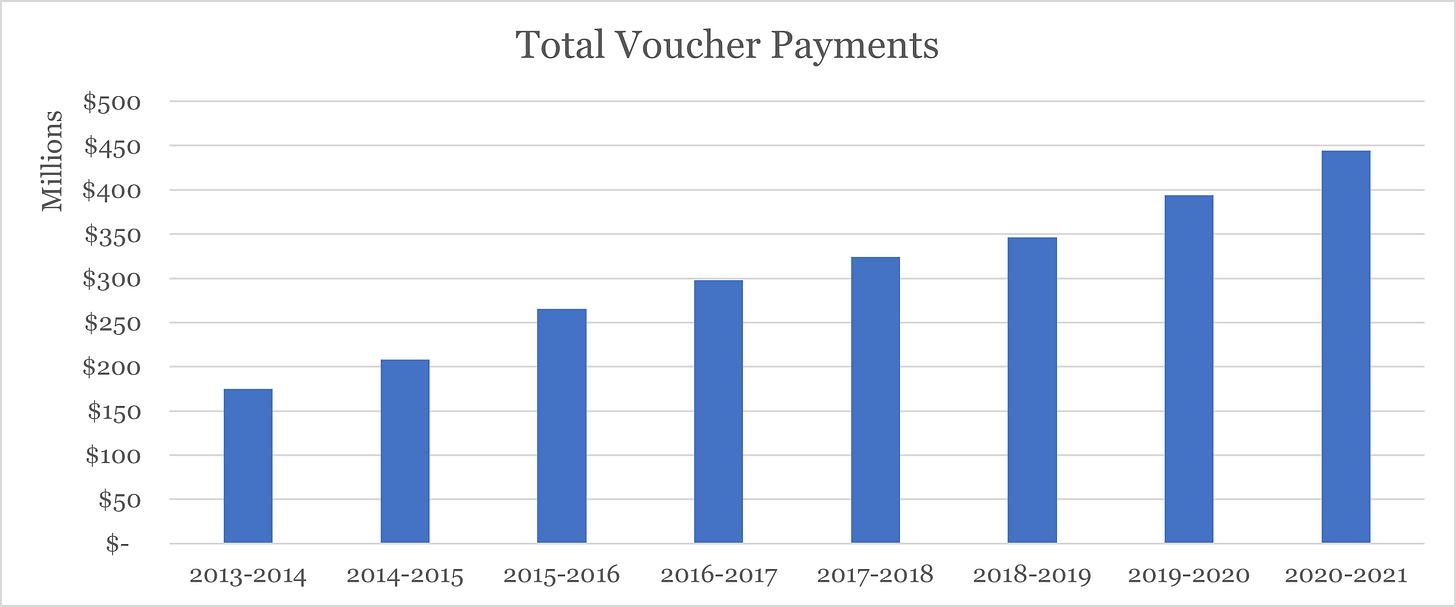10th Period: Fordham Unwittingly Admits EdChoice Unconstitutional
There’s been some news coverage today of Fordham’s latest foray into fantasy — a study they claim proves EdChoice vouchers are perfectly fine and dandy for kids and taxpayers.
However, tucked away in one of their “findings” is a kind of startling admission — that EdChoice forces local school districts to rely more on property taxes to pay for educating the students in public schools.
“Combined with the decrease in enrollments, this dynamic led to a 10-15 percent increase in local revenue per pupil.”
I’m sure the study’s author(s) had no idea what they had just done. But those of us who have been saying the same thing for years sure did. This is an admission that EdChoice means that students not taking EdChoice vouchers have to rely more on local, voter approved property taxes to pay for their educations — the exact thing that the Ohio Supreme Court ruled four different times made Ohio’s school funding system unconstitutional.
“The overreliance on local property taxes is the fatal flaw that until rectified will stand in the way of constitutional compliance,” ruled Justice Alice Robie Resnick in the 4th and final DeRolph decision in 2002.
So it was nice of Fordham to admit this. However, the report went on to spend a lot of time trying to minimize the potentially existential lawsuit Ohio’s voucher program faces, as well as mocking me and others as “Chicken Littles” (because those with a winning argument always use ad hominem attacks to strengthen their position).
The study blows minimal to zero impacts on student success into enormous justification for increasing taxpayer subsidies for private school tuitions. As Michigan State’s Josh Cowen put it: “First and most important: the study presents a ton of zero impacts and tiny effects. Mostly this is a #schoolvouchers report about statistical noise, packaged as a win.”
Exactly.
Take the information on segregation. The study compares the racial makeup of voucher students with the statewide racial makeup of Ohio students. The study’s author, Stephane Lavertu of Ohio State University (who taxpayers paid $132,968 in 2019 to educate students) was very careful to only compare the racial makeup of EdChoice recipients with public school students “statewide”.
Because he knows that EdChoice voucher students don’t come from every district. They come from majority-minority districts.
There are 95 districts that lose 10 students or more to EdChoice. In 76 of those districts, accounting for 87% of all vouchers given through the program, a higher percentage of white students take vouchers than there are in that district.
The average difference between white students taking vouchers and white students in those 76 districts was 76.2%. That means that in the districts where 87% of voucher students come from, voucher recipients are 76.2% more likely to be white than their public school counterparts.
My friends, that’s White Flight. Like, obvious White Flight.
I know that Voucher Champion and Senate President Matt Huffman gets all flustered about this — he is fond of saying such stuff like: “if you light the fuse that says racism then everyone is supposed to run for cover.”
Dear reader, do these data suggest — as Huffman wants you to think — that these segregation issues are “isolated examples”?
If 87% of voucher recipients are more likely to be white than the districts they come from, is that really “isolated”? Or is it “systemic”?
I mean in Huffman’s own district of Lima, Temple Christian takes 100% white voucher students. From a district that’s 35% white.
Here’s the district-by-district data on this just on the top 25 of the 76 districts. I mean it’s pretty clear what’s happening here, isn’t it?
The new Fordham study just glosses over this, uses statewide data to cherry pick comparisons and ignores the issue.
And it’s not like this is a surprise to anyone. Twenty years ago, Policy Matters Ohio found this exact problem in the original Cleveland Voucher Program.
Gee, if state leaders were aware there was a clear racial voucher distribution problem that led to a clearly more segregated system in 2002 and did nothing about it during the next 20 years, that would seem to be a state endorsement of de facto racial segregation. Not exactly the finding in Brown v. Board of Education.
Maybe that is the reason Huffman is more interested in attacking people like me who point out these problems than he is in actually solving the problem. Or addressing it at all.
Likewise, the study tries to talk up academic success, but in a really weird way. The way they say that vouchers are a success, I guess, is that students in public school districts that lose students to EdChoice do better on state tests, despite the vouchers.
Ironic, given the data that demonstrate voucher students do worse on state tests the longer they take the voucher.
But Lavertu admitted that “we are unable to determine how much the positive effect is due to student learning gains as opposed to changes in student composition.” So, in other words, they have no idea what’s going on with these test scores. All they know is, well, maybe vouchers don’t hurt kids’ learning in public schools.
Again, though, they don’t know whether the lack of state aid due to vouchers taking it from districts throttles that public school success. How do we know students wouldn’t be doing several points better than they are if they had the resources vouchers take?
Simple. We don’t. And neither do the study’s authors. They don’t have a clue.
What we do know from a Cincinnati Enquirer investigation is that 88 percent of the time, students taking vouchers do worse on state tests than the districts in which the voucher schools are located.
So, in a nutshell, this new Fordham study does the following:
-
Admits the way EdChoice is funded is unconstitutional
-
Can’t demonstrate that vouchers don’t hurt kids’ academic success in local public schools, and
-
Ignores the systemic racial segregation that’s been going on in EdChoice and its predecessor voucher programs for 20 years.
-
So let’s keep pumping money into it and expand the program everywhere, despite private school enrollment dropping significantly over the last 20 years.
Sounds like a plan.
This blog post has been shared by permission from the author.
Readers wishing to comment on the content are encouraged to do so via the link to the original post.
Find the original post here:
The views expressed by the blogger are not necessarily those of NEPC.




